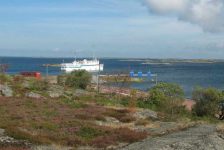Since Scotland’s ‘local’ elections in May 2022, there’s been much debate about coalitions and control. But there’s a bigger question – are Scottish councils with an average of 175 thousand inhabitants really local at all? And does that not matter?
The EU average council has a relatively meagre 10 thousand inhabitants. And Vágur, on the isolated southern Faroese island of Suðuroy, has just 1377 folk. But they’re doing pretty well after self-building a Sports High School and a 50m swimming pool to honour their local swimming champion and witnessing a population boom after 70 years of decline. All pioneered by their ultra local municipality. And although the Faroes is tiny (just 55k population) and has its own devolved parliament (the Løgting), there are 28 other local councils – one with just 80 inhabitants.
It’s a similar story in Norway with 356 councils – a total set to rise as municipalities forced to merge by the recent Conservative Government, are starting to separate again. But in Scotland no change is proposed in our 32 ‘local’ authorities. Even though Highland Council is the size of a small European state.
So big or small local government – who’s got it right?









